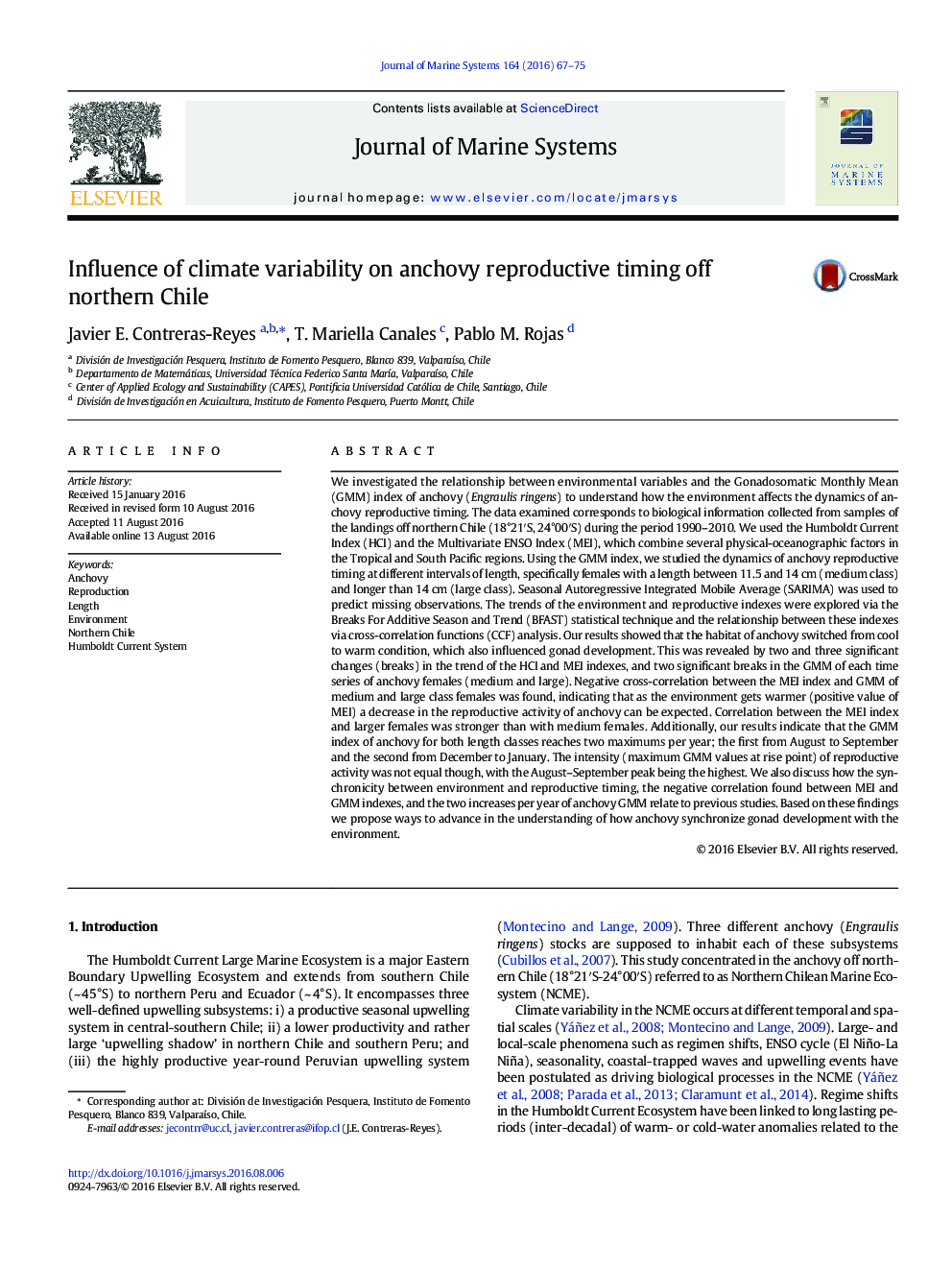| Article ID | Journal | Published Year | Pages | File Type |
|---|---|---|---|---|
| 4547843 | Journal of Marine Systems | 2016 | 9 Pages |
•Relationship between environmental variables and the reproductive index of anchovy is studied.•The physical environment of anchovy switch from cool to warm condition and also did the reproductive activity.•We considered the Humboldt Current Index (HCI) and the Multivariate ENSO Index (MEI).•Medium and large length classes of females were considered for Gonadosomatic Monthly Mean (GMM) index.•GMM index of anchovy at both classes of length reach two maximum per year.
We investigated the relationship between environmental variables and the Gonadosomatic Monthly Mean (GMM) index of anchovy (Engraulis ringens) to understand how the environment affects the dynamics of anchovy reproductive timing. The data examined corresponds to biological information collected from samples of the landings off northern Chile (18°21′S, 24°00′S) during the period 1990–2010. We used the Humboldt Current Index (HCI) and the Multivariate ENSO Index (MEI), which combine several physical-oceanographic factors in the Tropical and South Pacific regions. Using the GMM index, we studied the dynamics of anchovy reproductive timing at different intervals of length, specifically females with a length between 11.5 and 14 cm (medium class) and longer than 14 cm (large class). Seasonal Autoregressive Integrated Mobile Average (SARIMA) was used to predict missing observations. The trends of the environment and reproductive indexes were explored via the Breaks For Additive Season and Trend (BFAST) statistical technique and the relationship between these indexes via cross-correlation functions (CCF) analysis. Our results showed that the habitat of anchovy switched from cool to warm condition, which also influenced gonad development. This was revealed by two and three significant changes (breaks) in the trend of the HCI and MEI indexes, and two significant breaks in the GMM of each time series of anchovy females (medium and large). Negative cross-correlation between the MEI index and GMM of medium and large class females was found, indicating that as the environment gets warmer (positive value of MEI) a decrease in the reproductive activity of anchovy can be expected. Correlation between the MEI index and larger females was stronger than with medium females. Additionally, our results indicate that the GMM index of anchovy for both length classes reaches two maximums per year; the first from August to September and the second from December to January. The intensity (maximum GMM values at rise point) of reproductive activity was not equal though, with the August–September peak being the highest. We also discuss how the synchronicity between environment and reproductive timing, the negative correlation found between MEI and GMM indexes, and the two increases per year of anchovy GMM relate to previous studies. Based on these findings we propose ways to advance in the understanding of how anchovy synchronize gonad development with the environment.
